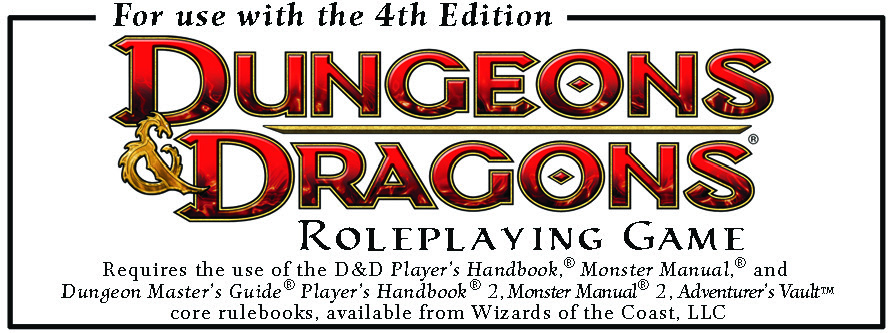The Adventure Starts Here
The Adventure Starts Here

D&D 4th edition does not have an Open Game License (OGL). Instead, it was released with a new Game System License (GSL). Many were turned off by the (seemingly) more closed nature of this license and shied away from developing content for 4th edition.
These documents were originally stored on the Wizards of the Coast website. The specific page is even referenced as a source for information within the license itself. When 5e was released, this license fell into disuse and, eventually, the Wizards page was taken down.
I was able to get the documents via the Wayback Machine. The most recent version of these documents was published on March 2, 2009. I checked the archive up until 2016 when the site was taken down and there were no additional updates. More importantly, I could find no indications that the license was ever officially revoked. As best I can tell, it is still a viable option for those that wish to create 4e content.
DISCLAIMER: I am not a lawyer nor do I represent Wizards of the Coast. I am simply sharing this information as an unofficial archive for those that are interested.
This is the license itself. It contains everything that you must do to be compliant with the terms of the agreement. Much of this is similar to what we see in the Open Game License (OGL).
The biggest difference might be the registration process, but this is actually not much different from other licenses. In essence, this license is giving you permission to use the contents of the published System Reference Document (SRD) for 4e, much as the OGL does for 3.5e and 5e.
You will note that the legal text you must include in your work is actually much smaller than what is required with the OGL.
Game System License (GSL)
When the license was first proposed in 2008 (even before 4e was released) there was a lot of backlash over it. This FAQ attempted to address some of those concerns. To be fair, the version of the GSL that was ultimately released retracted some of their initial proposals regarding whether you could publish content for older editions as well as 4th edition.
Game System License FAQs
If 4e were released today, then Wizards would simply create a website where you could register your agreement with the terms of the license (like D&D Beyond). While this would have been possible even in 2008, the GSL required that you physically sign and mail to Wizards your Statement of Agreement to the terms of the license. They reserved the right to decline your access to the license.
If you ever decided to stop making GSL content, you had to send in a Notice of Termination indicating that you would no longer be creating products under the agreement.
It should be pointed out that the GSL was revokable and they indicated that they could make changes to it at any time and it was up to the licensee (you) to keep up with any changes and conform to them.
GSL Statement of Acceptance
GSL Notice of Termination
I think this was kind of cool. When you created content using the GSL, you were required to include the 4e compatibility logo in specific locations of the document. This is similar to the Dungeon Master’s Guild requiring a logo on your cover pages. This logo was nice because it actually had the official D&D logo and indicated that your product was compatible with the game.
4e GSL Logo (color)
4e GSL Logo (B&W)
Finally, here is what the license gets you. If you are familiar with the 3.5e SRD and the 5e SRD, you will notice that this document is very different. While the other SRDs almost seem like a basic set of rules with full details on spells and monsters and classes and all that, this SRD is more focused on the terms that you are allowed to use.
The expectation is that you would not reprint actual content in your documents, but rather refer to the official content and send people to those books. So rather than print out a Goblin Warrior monster stat block, you would mention the Goblin Warrior and then include a note that the stats can be found in the Monster Manual.
This is certainly more restrictive than the other SRDs, but what is really interesting is that this SRD actually provides you with the formatted stat blocks for powers and spells and classes and monsters and other things. They are literally giving you permission to use their ‘trade dress’ in your content. This is something that the other SRDs explicitly forbid.
4e System Reference Document (SRD)
It is unclear how many companies actually used this license. I know that some tried for some time while others ignored it completely. It is likely that this contributed to the downfall of 4e. If there was greater community support for the edition, it might have survived longer.